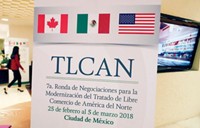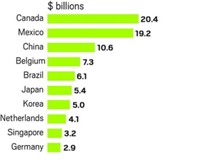Advertisement
Grab your lab coat. Let's get started
Welcome!
Welcome!
Create an account below to get 6 C&EN articles per month, receive newsletters and more - all free.
It seems this is your first time logging in online. Please enter the following information to continue.
As an ACS member you automatically get access to this site. All we need is few more details to create your reading experience.
Not you? Sign in with a different account.
Not you? Sign in with a different account.
ERROR 1
ERROR 1
ERROR 2
ERROR 2
ERROR 2
ERROR 2
ERROR 2
Password and Confirm password must match.
If you have an ACS member number, please enter it here so we can link this account to your membership. (optional)
ERROR 2
ACS values your privacy. By submitting your information, you are gaining access to C&EN and subscribing to our weekly newsletter. We use the information you provide to make your reading experience better, and we will never sell your data to third party members.
Environment
Updated North American trade deal could boost U.S. chemical exports
Manufacturers urge Trump negotiators to increase market access
by Glenn Hess
July 9, 2017
| A version of this story appeared in
Volume 95, Issue 28
With talks aimed at revising the North American Free Trade Agreement (NAFTA) expected to start soon, chemical manufacturers recently offered advice to the Trump Administration for updating the 23-year-old accord with Canada and Mexico.
2016 U.S. chemical exports
Sources: American Chemistry Council, U.S. Department of Commerce, U.S. International Trade Commission.

Sources: American Chemistry Council, U.S. Department of Commerce, U.S. International Trade Commission.
For chemical manufacturers, capitalizing on the shale gas revolution by securing expanded access to the two largest markets for U.S. chemical exports—Canada and Mexico—is a key goal, said Greg Skelton of the American Chemistry Council (ACC), an industry trade association.
In a June 28 testimony before the U.S. Commerce Department’s International Trade Commission, Skelton noted that the U.S. has a large and growing trade surplus in industrial chemicals that stands at $28.2 billion. It is “likely to grow significantly as increased production from more than $185 billion in announced new investment in domestic chemical manufacturing comes on stream,” said Skelton, ACC’s senior director of regulatory and technical affairs.
An ACC report estimates that exports of chemicals linked to the availability of abundant, cheap natural gas from shale, such as polymers, plastics, resins, and specialty chemicals, will more than double from $60 billion in 2014 to $123 billion by 2030.
But this increased production cannot all be consumed domestically, Skelton said. “To maximize this competitive advantage, it is essential to strengthen and expand access to key foreign markets,” he said.
However, NAFTA has greatly benefited the chemical sectors in Canada, Mexico, and the U.S. Since the deal took effect in 1994, trade in chemicals among the three countries has more than tripled, from $20 billion to $63 billion per year.




Join the conversation
Contact the reporter
Submit a Letter to the Editor for publication
Engage with us on Twitter